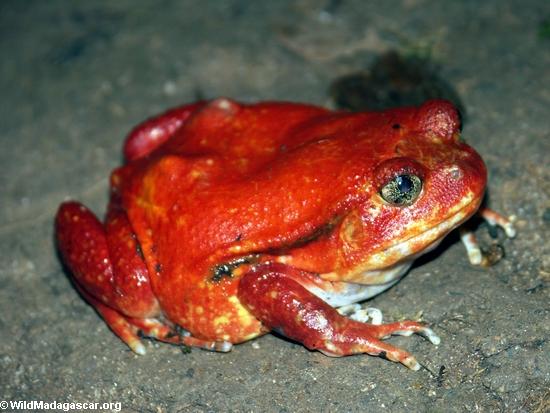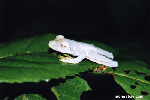How to save disappearing amphibians subject of meeting this weekend
Rhett A. Butler, mongabay.com
September 14, 2005

Scientists are meeting this weekend to discuss strategies for addressing the global decline of amphibians. Earlier this year, the Global Amphibian Assessment, a survey of the planet’s amphibian species, found that nearly a third (32%) of the world’s amphibian species are threatened and 129 species have gone extinct since 1980.
Scientists are unsure of what is ultimately behind this decline, though the leading theory links global climate change to the emergence of deadly chytrid fungal disease. This fungus, which kills frogs by damaging the keratin layer of their skin, has decimated frogs worldwide.
Claude Gascon, the chair of IUCN’s amphibian group, told BBC News, “The smoking gun in all this is the fungus. We have some idea what it’s doing, but we don’t know where it’s coming from and how it’s being moved around, and there is no way of controlling it in the wild. That leaves us with few options but to go and rescue some populations at risk from disease, and then re-introduce them in the wild when we’ve cleaned up or found ways of allowing them to live in the wild with the fungus.”
Among the species to disappear is Costa Rica’s Golden toad (Bufo periglenes) and the Gastric Brooding Frog (Rheobatrachus silus) of Queensland, Australia. Habitat loss and pollution are also considered major threats to global amphibian populations.
 |

|

|
|
 |
 |

|
|
More Frog and toad photos |
|||
At the Washington DC meeting, scientists are expected to propose the establishment of a multimillion dollar captive breeding program. So far such programs have had mixed success. The Kihansi Spray Toad, a small toad that is virtually extinct in the wild after its habitat was destroyed by a hydroelectric project in Tanzania, only exists today thanks to efforts by the Bronx Zoo of New York, the Detroit Zoo in Michigan, and the Toledo Zoo in Ohio. Nevertheless, the toad’s captive population has fluctuated dramatically in the past few years due to its biology (they breed in groups) and small size, and difficulties typically associated with captive amphibians (metabolic bone disease, hypovitaminosis A, short tongue syndrome, bacterial sepsis and chronic bloating linked to renal disease).
Ecologists fear that the global decline of amphibians may have broader implications for the world’s environment. Because amphibians have highly permeable skin and spend a portion of their life in water and on land, they are sensitive to environmental change and can act as the proverbial “canary in a coal mine,” indicating the relative health of an ecosystem. As they die, scientists are left wondering what plant or animal group is next.
The disappearance of amphibians is troubling on other grounds as well. Many frogs and toads secrete toxic alkaloids to protect themselves from predators. These alkaloids have been found to have medical applications as pain killers. Thus the loss of each amphibian species eliminates the possibility of finding compounds with potential curative properties.
Time is running out for the world’s amphibians; scientists are trying to act before it is too late. The longer the delay, the higher the cost of inaction.
This article used a quote from BBC News.